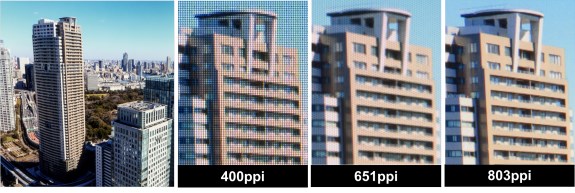The 803ppi panel has a resolution of 1920 x 2160 pixels, it features a 90Hz refresh rate, 150 nits brightness, 4.5ms gray-to-gray response time, and a 700:1 constrast ratio.
JDI was formed in April 2012 and consists of the display panel units of Sony, Hitachi and Toshiba.

Japan Display Inc. (JDI) today announced the development of a 3.60-inch 803ppi low temperature polysilicon (LTPS) TFT LCD specifically designed for virtual reality (VR) head mount display (HMD) applications. JDI is accelerating development of even higher [resolution/pixel density] LCDs for HMD and plans to finish development of over 1000ppi in the first half of 2018.
JDI's LTPS TFT LCD for HMD that is currently in mass production has a super-fine pixel density of approx. 600ppi, which provides a sense of reality to users. We, however, realized that a pixel density even over 600ppi is not sufficient to avoid seeing the pixel structure in all cases, and that a display with pixel density of 800ppi is necessary. Furthermore, in order to decrease the size and weight of the [HMD/device], both decreasing the size of the display and increasing the magnification of the lenses are effective, which requires even higher pixel density of 1000ppi or higher.
Comparison of Pixel Density
Today, the amount and speed of the display data which a VR-dedicated-HMD processes is much greater than a smartphone. Therefore, the receipt of VR-dedicated-HMD display data via current telecommunication networks is practically not possible, and most VR-dedicated-HMDs use hard-wired systems. However, when the next generation "5G network" comes into place, HMDs will be able to receive the required display data via the telecommunication network, which will enable the broadening of VR applications and services. We expect the market size of VR-dedicated-HMDs will expand along with the expansion of 5G networks.
JDI intends to maintain our leading position in displays for VR-dedicated-HMDs by leverating our long experience in the development of high resolution LTPS TFT LCDs.